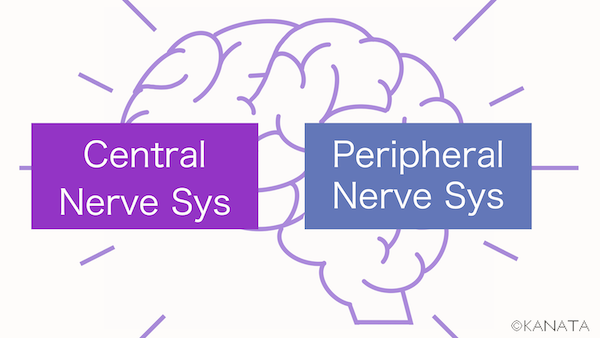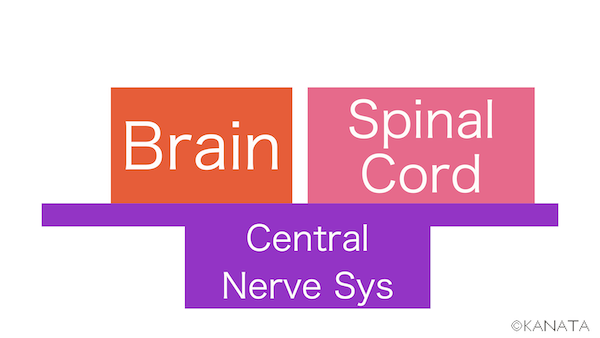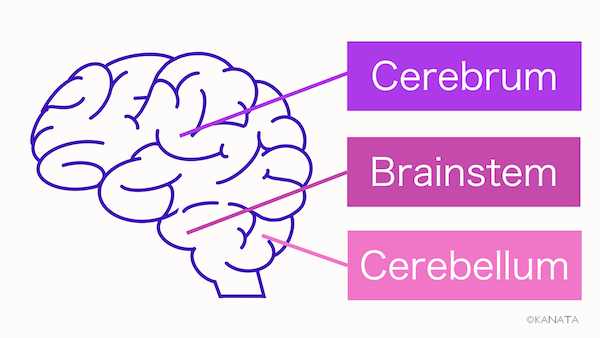Classification of the Central Nervous System
Mr.Neuko, please help!
What's the matter, Cellnosuke? Why are you in such a hurry?
Today's class started with the nervous system, but I didn't understand a thing.
I have no idea where to begin, so please help!
Hmm. The nervous system can be quite challenging to grasp.
Very well! I'll start by teaching you the fundamentals of the nervous system today!
Listen attentively!
Please, I beg you!
Central Nervous System and Peripheral Nervous System
This is something that can be said in common when studying other areas.
First, understanding the big picture often facilitates comprehension in physiology and anatomy.
The big picture?
Indeed. And the big picture in the nervous system is that all the nerves in the body are classified into either the central nervous system or the peripheral nervous system.

Are there only two types, central nervous system and peripheral nervous system? In class, various names of nerves were mentioned.
This is where confusion often arises at first. Broadly speaking, there are just two types.
Especially because some nerves in the peripheral nervous system have complicated names, it can be easy to get confused.
So, let me emphasize again, it's important to understand that the nervous system consists of only two types: the central nervous system and the peripheral nervous system.

I understand.
All nerves are classified as either central nervous system or peripheral nervous system.
Classification of the Central Nervous System
Now, let's explain the classification of the central nervous system.
Please, go ahead!
The central nervous system consists of the brain and the spinal cord only.

Is that all there is to it?
Yes, that's right.
What about the cerebrum and the cerebellum? Where do they belong?
That's a good question.
Anatomically, the brain is classified into the cerebrum, the brainstem, and the cerebellum.
In other words, both the cerebrum and the cerebellum are part of the central nervous system.

It does get complicated when you dive into the details, doesn't it?
Indeed it does.
Right now, it might seem overwhelming with all the unfamiliar terms, but as you learn the functions of each, your understanding will greatly improve.
We will eventually have more detailed lectures, so please be patient for a while.
Yes, I will.
However, it's true that the terminology can become quite complex.
So, for today, it's enough to understand that the central nervous system includes the brain and spinal cord only.
I understand!

The central nervous system consists of the brain and spinal cord only.
So, today's lecture will conclude here.
This lecture was quite short, wasn't it?
Actually, I was preparing lectures on both the central nervous system and the peripheral nervous system together.
However, the peripheral nervous system has so much information that I've decided to split the lectures into two parts.
I see. That makes sense.
You can forget the detailed discussions about the cerebrum, brainstem, and such that we mentioned earlier.
Through today's lecture, I want you to be able to confidently say that the central nervous system refers to the brain and spinal cord.
I understand!
Let's solve a problem before we finish.
The brain and spinal cord